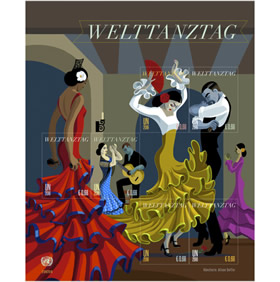
Ladies
The style of a lady’s dress is a matter so entirely dependent on age, means and fashion, that we can offer but little advice upon it. Fashion is so variable, that statements which are true of it to-day may be false a month hence. Respecting no institution of modern society is it so difficult to pronounce half a dozen permanent rules.
We may perhaps be permitted to suggest the following leading principles; but we do so with diffidence. Rich colors harmonize with rich brunette complexions and dark hair. Delicate colors are the most suitable for delicate and fragile styles of beauty. Very young ladies are never so suitably attired as in white. Ladies who dance should wear dresses of light and diaphanous materials, such as tulle, gauze, crape, net, &c., over colored silk slips. Silk dresses are not suitable for dancing. A married lady who dances only a few quadrilles may wear a décolleté silk dress with propriety.
Very stout persons should never wear white. It has the effect of adding to the bulk of the figure.
Black and scarlet, or black and violet, are worn in mourning.
A lady in deep mourning should not dance at all.
However fashionable it may be to wear very long dresses, those ladies who go to a ball with the intention of dancing and enjoying the dance, should cause their dresses to be made short enough to clear the ground. We would ask them whether it is not better to accept this slight deviation from an absurd fashion, than to appear for three parts of the evening in a torn and pinned-up skirt?
Well-made shoes, whatever their color or material, and faultless gloves, are indispensable to the effect of a ball-room toilette.
Much jewelry is out of place in a ball-room. Beautiful flowers, whether natural or artificial, are the loveliest ornaments that a lady can wear on these occasions.
Gentlemen
A black suit, thin enameled boots, a white neckcloth, and white or delicate grey gloves, are the chief points of a gentleman’s ball-room toilette. He may wear an embroidered shirt; and his waistcoat may be of silk. White waistcoats are no longer fashionable. Much display of jewelry is no proof of good taste. A handsome watch-chain, with, perhaps, the addition of a few costly trifles suspended to it, and a set of shirt-studs, are the only adornments of this kind that a gentleman should wear. The studs should be small, but good.
A gentleman’s dress is necessarily so simple that it admits of no compromise in point of quality and style. The material should be the best that money can procure, and the fashion unexceptionable. So much of the outward man depends on his tailor, that we would urge no gentleman to economize in this matter.
*******
This is taken from Routledge's Manual of Etiquette.
Copyright © D. J. McAdam· All Rights Reserved